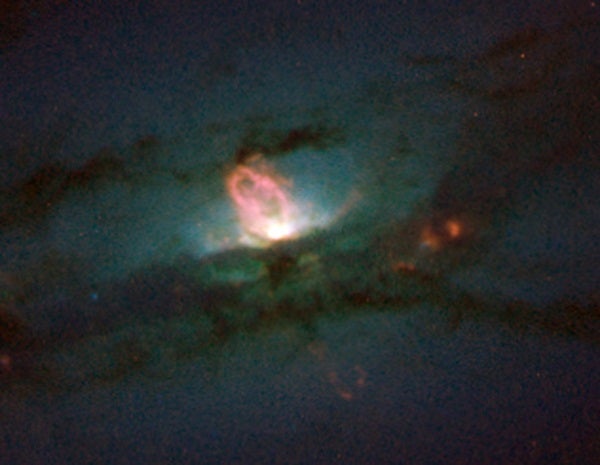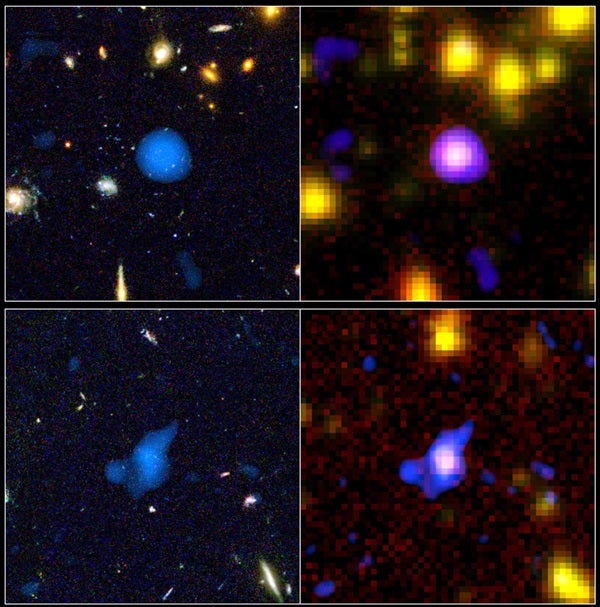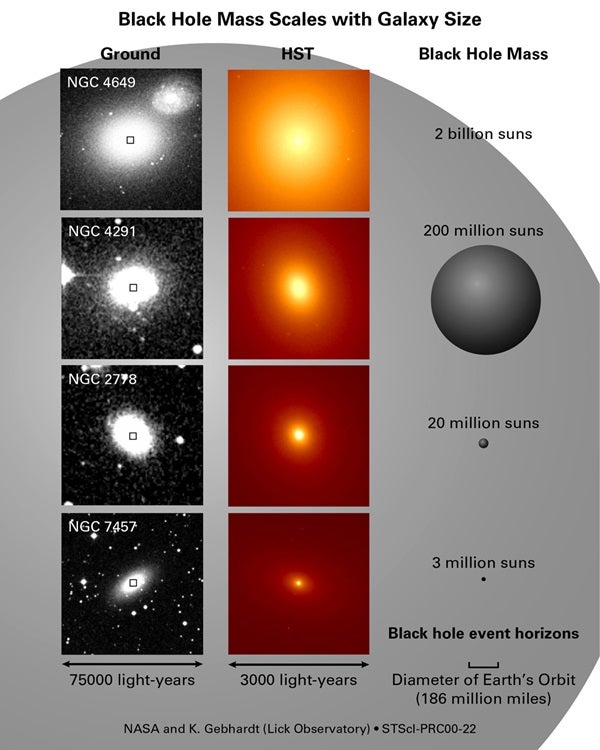In the early 1960s, astronomer Maarten Schmidt of the California Institute of Technology made a breakthrough discovery. Looking at several stars that were strangely bright at radio wavelengths, Schmidt obtained a spectrum of the “star” 3C 273 and found its distance to be extremely large. It wasn’t a star at all, but a remote, extraordinarily energetic object that looked like a star — a quasi-stellar object, or quasar.
For many years, the mystery of exactly what quasars were remained unsolved. They baffled astronomers at every turn. Their spectral lines were shifted by an incredible amount toward the red end of the spectrum; because of their great brightnesses, they must represent the brightest objects in the universe, astronomers deduced. But what could be causing such an amazing outpouring of energy, apparently so early in the cosmos’ history?

Bringing the universe to your door. We’re excited to announce Astronomy magazine’s new Space and Beyond subscription box – a quarterly adventure, curated with an astronomy-themed collection in every box. Learn More >>.
The first quasar identified, 3C 273, lies in the constellation Virgo 2 billion light-years away. But at this tremendous distance, it still glows brightly enough to be viewed with amateur telescopes in the backyard. How could an object that looks like a star be producing several thousand times the entire energy output of the Milky Way Galaxy?
Oddly, astronomers found that these objects vary their light outputs over months or even days, so they had to be relatively small objects, too. As searches for quasars picked up steam, astronomers found many more of them. They found many starlike objects with colors different from those of stars and point sources associated with X-ray emission or strong radio output.
Now, 60 years after the discovery of 3C 273, the latest catalogs contain more than 180,000 quasars, thanks to systematic surveys like the Sloan Digital Sky Survey.
Years into the quasar puzzle, in the late 1970s and 1980s, astronomers began to get a handle on what these objects might be. Quasars fit into a classification of a large number of seemingly related objects called active galactic nuclei, or AGN. Now astronomers realize that, clearly, all types of active galaxies — quasars, Seyfert galaxies, BL Lacertae objects, radio galaxies, and other weird entities — have one thing in common: They are all driven by powerful central black holes. Material falling into a central-engine black hole — stars, gas, and dust — gets spun quickly and creates high-powered jets of radiation that produce the amazing output we see as a quasar.
More recently, in the 1990s, astronomers realized AGN are really different shades of the same creature, some appearing like different animals because of different orientations to our line ofsight along with other geometrical differences. Moreover, Hubble Space Telescope data continued turning up huge numbers of monster black holes in the centers of many galaxies — even “normal” galaxies like the Andromeda Galaxy and the Milky Way. Soon, a general picture emerged of how quasars and black holes fit into the cosmos.
The idea came forward that most galaxies other than dwarfs have central black holes. The idea is that black-hole “seeds” either attracted matter into forming galaxies or formed within young galaxies and acted as powerful, hungry engines in the early universe. This action produced quasars and explains why most quasars are extremely distant. As the black hole “ate” more and more matter from galaxies’ centers, little fuel remained for them to feast upon nearby, so they slowly quieted down. Most galaxies in the recent universe have slumbering giants in their centers.
Sleeping giants can awake, however. When interactions with other galaxies, starbursts, or gas clouds falling into the centers of galaxies “wake up” central black holes, they can erupt again with an outburst of energy. This explains AGN in the nearby universe. The prevailing notion, then, is that most large galaxies contain big black holes, the majority of which are asleep after a wild youth.













